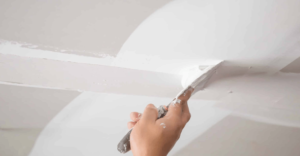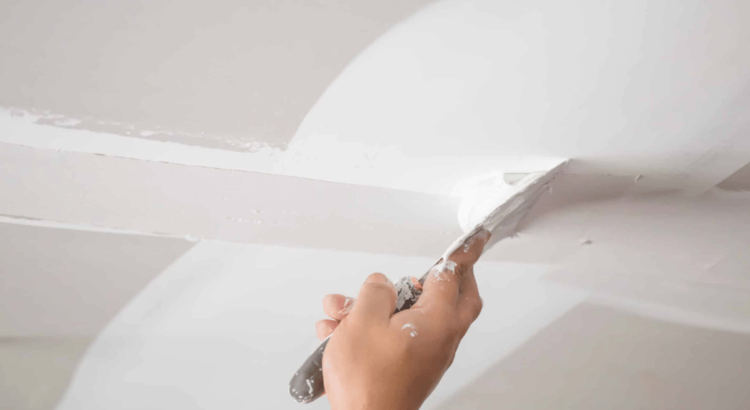Drywall Contractor
Are you interested in becoming a drywall contractor? In this article, we will explore the responsibilities, skills, and challenges that come with this profession. As a drywall contractor, you will play a crucial role in the construction process by installing drywall and supporting energy efficiency in buildings. We will discuss the different types of drywall available, the installation process, safety concerns, and the importance of effective project management and collaboration. So let’s dive in and discover what it takes to be a successful drywall contractor!
Types of Drywall
There are different types of drywall available, each with its own unique features and benefits. Some types offer increased moisture resistance, making them ideal for use in areas such as bathrooms or basements. These moisture-resistant options help to prevent mold and mildew growth, ensuring a longer lifespan for the walls. Other types of drywall provide additional fireproofing and soundproofing capabilities, making them perfect for buildings that require enhanced safety measures or noise reduction.
When selecting the appropriate type of drywall for your project, it is important to consider your design objectives and budget. There are also options available that are made from natural and recycled materials, promoting sustainability and environmental consciousness.
Now that you understand the different types of drywall available, let’s dive into the installation process.
Installation Process
During the installation process, accurate measurements and precise cuts are crucial for proper fit and smooth joints. To ensure a successful installation, here are four key steps to follow:
- Measure twice: Accurate measurements are essential for a seamless finish. Take your time to measure each piece of drywall before making any cuts.
- Cut with precision: Use a sharp utility knife or drywall saw to make clean, straight cuts. Take care to follow your measurements precisely.
- Fit it right: When placing the drywall sheets, make sure they fit snugly against the framing and leave no gaps between them.
- Finishing touches: After securing the drywall in place, apply joint compound, tape the seams, and sand down any imperfections for a smooth surface ready for paint or wallpaper.
Now that you know how important accuracy is during the installation process, let’s explore the requirements and dangers faced by drywall contractors as they complete their work.
Requirements and Dangers
To successfully navigate the requirements and dangers of being a drywall contractor, you must ensure that you have the necessary licensing and hands-on experience. Each state has its own licensing requirements, so it’s important to research and obtain the appropriate licenses for your area. Hands-on experience is crucial in this field, as it allows you to develop the necessary skills such as physical strength and precision cuts. Consider participating in an apprenticeship program that provides both classroom instruction and on-the-job training.
Being a drywall contractor also comes with its fair share of dangers. Heavy sheets of drywall require multiple workers for installation, which can increase the risk of falls from scaffolding. Additionally, dust from sanding and gypsum board poses health risks if proper protection is not worn. Reputable contractors prioritize safety by implementing a comprehensive safety and wellness program.
Now let’s explore the importance of project management in the drywall contracting industry…

Importance of Project Management
Make sure you prioritize project management as it plays a crucial role in the success of your drywall contracting business. Effective project management is essential for keeping track of delays, managing labor productivity, and ensuring clear communication with owners and general contractors. By documenting delays and lost labor hours, you can easily identify areas where improvements can be made. Utilizing project management software will help you track and manage delays, integrate meeting minutes and emails for better communication, and provide a central repository for detailed documentation. This not only aids in risk mitigation but also ensures clear accountability throughout the entire project. With effective project management practices in place, you can streamline operations and maximize efficiency. Transitioning into the next section about collaboration and communication, it’s important to understand how these factors work hand-in-hand with project management to achieve successful outcomes.
Collaboration and Communication
Collaboration and communication are vital for the success of a drywall contracting business. As a drywall contractor, you work closely with owners, general contractors, and other trades to ensure that projects are completed efficiently and effectively. Open lines of communication allow for clear understanding of expectations and requirements, while collaboration promotes teamwork and problem-solving. To facilitate this collaboration and communication, consider implementing project management software that allows for easy tracking of progress, document sharing, and real-time updates. Regular meetings and clear email integration can also aid in effective communication. By working together with all stakeholders involved in a project, you can ensure that everyone is on the same page and that any issues or delays are addressed promptly. This fosters a sense of belonging within the team and contributes to the overall success of your drywall contracting business.
| Benefits of Collaboration | Benefits of Communication |
|---|---|
| Promotes teamwork | Clarifies expectations |
| Enhances problem-solving | Builds trust |
| Increases efficiency | Prevents misunderstandings |
Table: The benefits of collaboration and communication in a drywall contracting business
Frequently Asked Questions
What are the different types of drywall finishes available for aesthetic purposes?
For aesthetic purposes, there are various types of drywall finishes available. These include smooth finish, textured finish, skip trowel finish, orange peel finish, and knockdown finish. Each choice offers a unique look to complement your design objectives.
How can a drywall contractor ensure energy efficiency in a building?
To ensure energy efficiency in a building, you can focus on using environmentally-friendly and energy-efficient materials for insulation and drywall. Additionally, prioritize proper installation techniques and sealing to minimize air leakage and maximize thermal performance.
What are some common mistakes to avoid during the drywall installation process?
To avoid common mistakes during the drywall installation process, ensure accurate measurements and cuts for a proper fit. Pay attention to the finishing process, using joint compound and tape for smooth joints and edges.
What are the safety measures drywall contractors should take to protect themselves from health hazards?
To protect yourself from health hazards as a drywall contractor, ensure you wear proper protective gear such as eye and respiratory protection. Take precautions against dust from sanding and gypsum board, which can pose risks to your health.
How can drywall contractors effectively manage and communicate with other trades to prevent delays in the project?
To effectively manage and communicate with other trades, prioritize clear and open communication. Regularly coordinate schedules, share project updates, and address any issues promptly. Collaboration and teamwork are key to preventing delays in the project.


